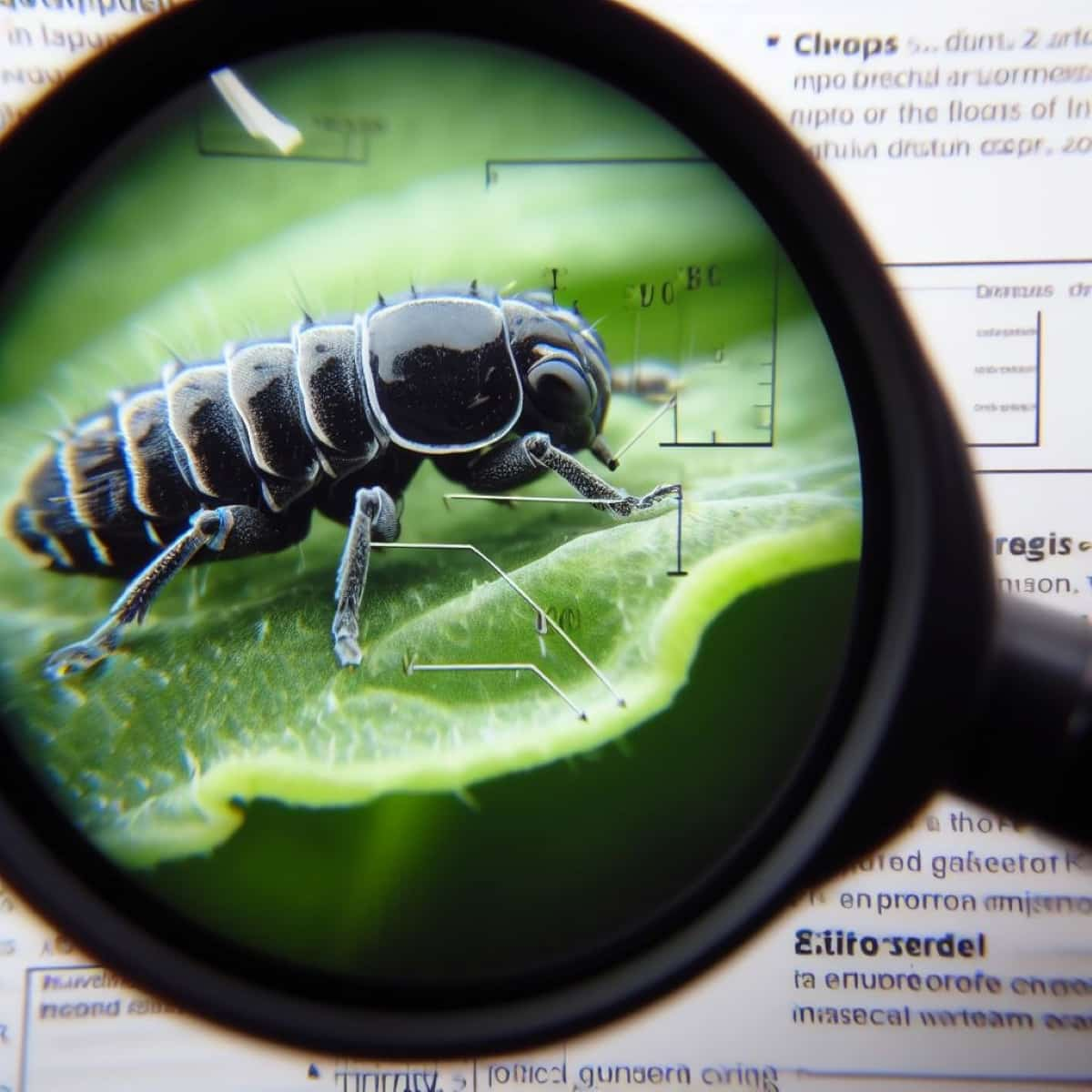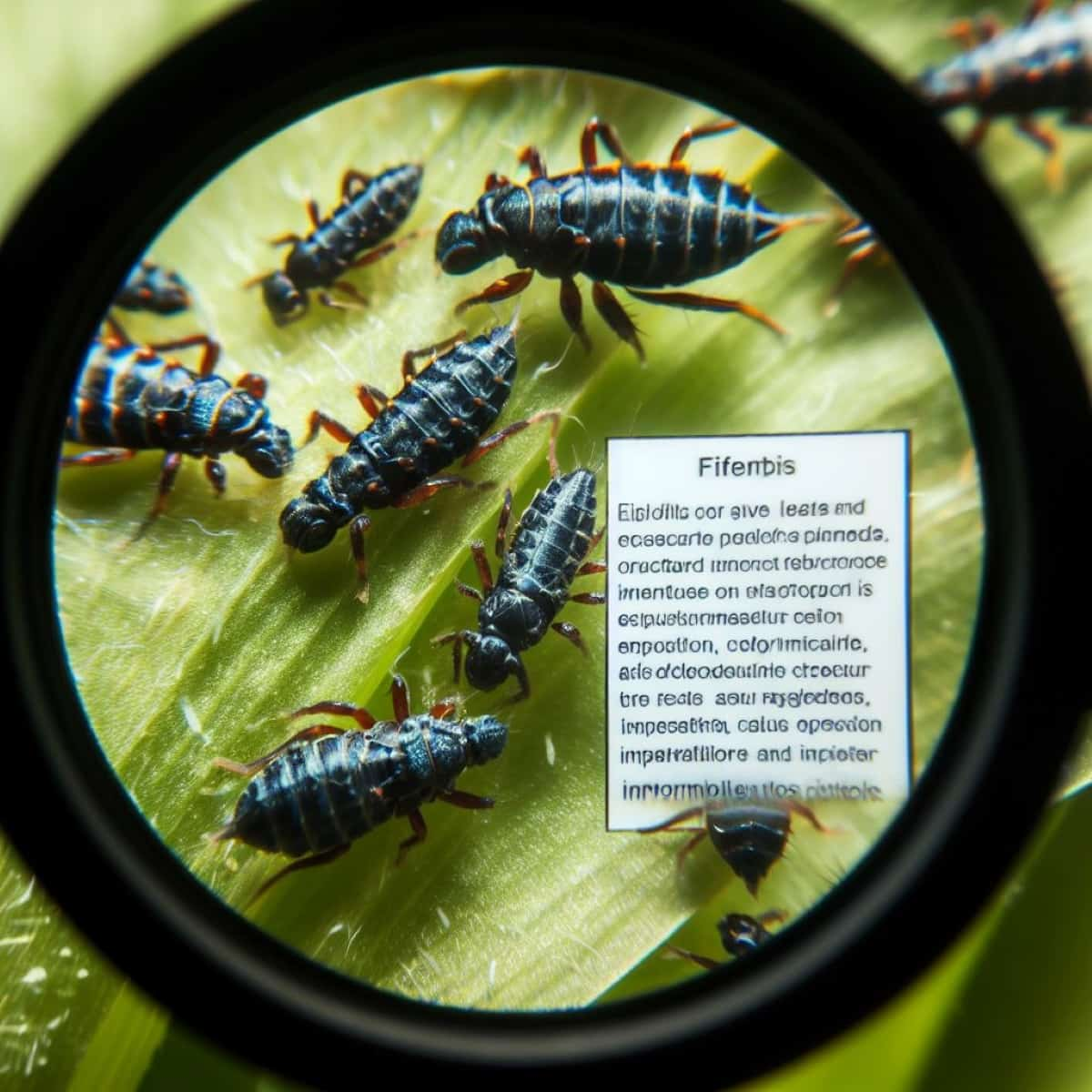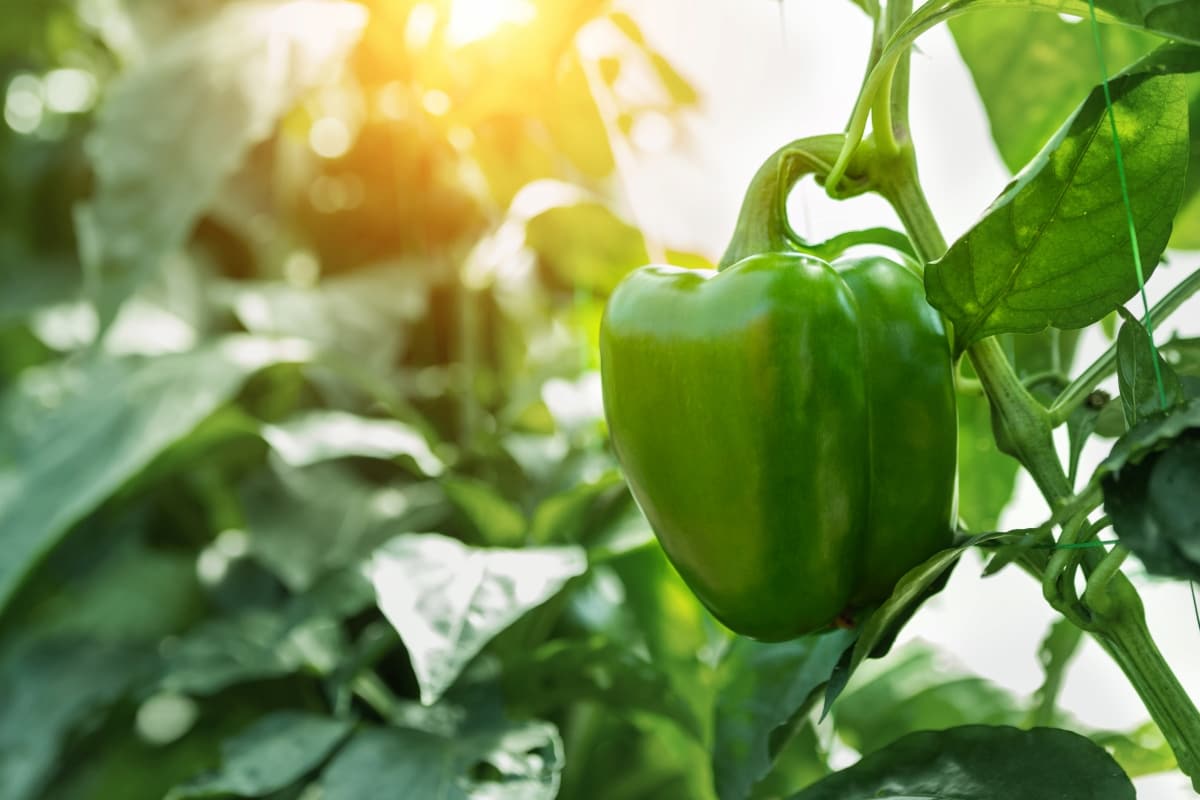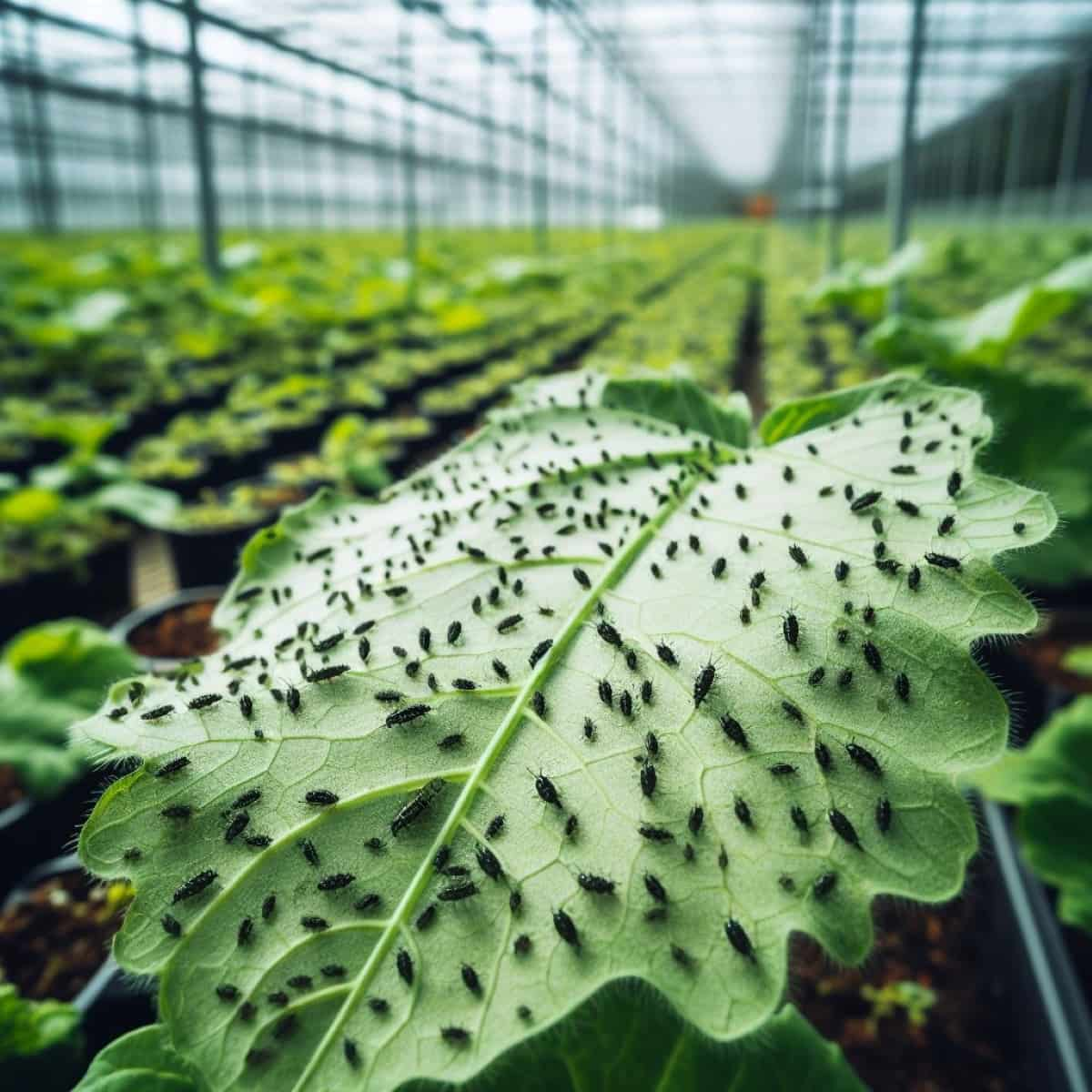Managing black thrips in capsicum crops is a significant challenge for growers worldwide. These tiny pests can cause extensive damage, leading to reduced yield and quality of the produce. Effective management of black thrips requires a comprehensive understanding of their behavior, life cycle, and the damage they inflict on capsicum plants. This article dives into various strategies for controlling black thrips, encompassing cultural, biological, chemical, and integrated pest management (IPM) methods.

The focus is on practical, sustainable approaches that farmers can implement to protect their crops. By combining different tactics, from selecting resistant varieties to utilizing specific insecticides and encouraging natural predators, this guide aims to provide a holistic view of managing black thrips in capsicum, ensuring healthy and productive plants.
How to Manage Black Thrips in Capsicum
Understand Black Thrips Infestation in Capsicum
Black thrips are tiny pests that can severely affect capsicum plants. These insects feed on the sap of capsicum, leading to reduced growth and yield. Recognizing an infestation early is key to effective management. Black thrips are small, with a distinctive dark color, making them visible against the lighter background of capsicum leaves. They are often found on the underside of leaves, in flower buds, or near young fruits.
The damage caused by black thrips includes silvery or speckled leaves, stunted growth, and misshapen fruits. Capsicum plants infested with black thrips may also exhibit curled or distorted leaves. This pest is particularly challenging to control due to its quick life cycle and ability to rapidly develop resistance to insecticides. Therefore, a combination of strategies is often necessary for effective control.
Identify Black Thrips Damage in Capsicum
Identifying black thrips damage in capsicum plants is crucial for timely and effective management. The symptoms include silvering of the leaf surface, distortion of young leaves, and stunted growth. In severe cases, black thrips can cause the flowers to drop prematurely, significantly reducing fruit yield. Thrips damage is also characterized by black fecal spots and a stippled or speckled appearance on leaves.
If the infestation is high, capsicum plants may appear bronzed or scorched. It’s important to regularly inspect your capsicum plants for these signs, especially during warm and dry conditions, which are favorable for thrips. Early identification allows for the timely application of control measures, reducing the impact of thrips on your capsicum plants.
Cultural Control Methods for Black Thrips in Capsicum
Cultural control methods are a crucial aspect of managing black thrips in capsicum. These methods involve altering the environment or cultivation practices to make it less favorable for thrips. An effective approach involves ensuring your soil is healthy with proper drainage because thrips tend to do well in plants that are stressed. Regular weeding is also important, as weeds can host thrips populations. Mulching can help retain soil moisture and reduce thrips stress on capsicum plants.
Crop rotation and intercropping with non-host plants can disrupt the life cycle of thrips. Another cultural practice is to use reflective mulches, which disorient thrips and reduce their ability to locate capsicum plants. Water stress should be avoided as it can increase the susceptibility of capsicum to thrips damage. Regular monitoring and early detection of thrips are essential in implementing cultural control methods effectively.
In case you missed it: How to Control Okra Thrips Naturally: How to Get Rid of Them with Natural and Organic Treatment

Biological Control of Black Thrips in Capsicum Plants
Biological control involves using natural enemies of black thrips to manage their population in capsicum cultivation. Predatory insects like ladybugs, lacewings, and predatory mites are effective in controlling thrips. These natural predators can be encouraged in the garden by planting nectar-producing flowers or by releasing commercially available beneficial insects. Biological insecticides based on fungi or bacteria can also be used.
These biological agents specifically target thrips without harming beneficial insects. This method is environmentally friendly and sustainable, reducing the reliance on chemical insecticides. Regular monitoring of thrips populations and the presence of natural predators is important for the success of biological control. This approach, when combined with cultural control methods, forms an integrated strategy for managing black thrips in capsicum effectively and safely.
Chemical Control Options for Black Thrips in Capsicum
Chemical control is a common approach to managing black thrips in capsicum. A variety of insecticides are available, but it’s crucial to choose products that are effective against thrips. The list of insecticides for thrips control consists of products containing active substances designed to affect the nervous system of thrips, resulting in a quick and effective reduction in their population. However, it’s important to rotate insecticides with different modes of action to prevent resistance development in thrips populations.
Always follow label instructions and apply insecticides during cooler parts of the day to minimize harm to beneficial insects. Additionally, insecticide use should be reasonable to avoid environmental contamination and to preserve the efficacy of these chemicals for future seasons. Regular monitoring is essential to determine the necessity and timing of insecticide applications, reducing the overuse of chemicals.
Integrated Pest Management (IPM) for Black Thrips in Capsicum Crop
Integrated Pest Management (IPM) for black thrips in capsicum involves a combination of strategies to manage pest populations effectively and sustainably. This approach includes cultural, biological, and chemical control methods tailored to the specific conditions of the capsicum crop. IPM starts with the selection of resistant capsicum varieties and incorporates practices like crop rotation and intercropping.
In case you missed it: Chilli Thrips Management: Symptoms, Treatment, Chemical, Biological, and Organic Control

Biological control plays a significant role, utilizing natural predators and entomopathogenic fungi to suppress thrips populations. Chemical control is used as a last resort, with a focus on selective insecticides that target thrips while minimizing impact on beneficial organisms. Regular monitoring and early detection of black thrips are critical in IPM, enabling timely and targeted interventions. By integrating various control methods, IPM reduces reliance on chemicals, promotes ecological balance, and supports sustainable capsicum production.
Monitor and Detect Early Black Thrips in Capsicum
Early monitoring and detection are crucial in managing black thrips in capsicum effectively. Regular inspection of capsicum plants is necessary, paying close attention to the underside of leaves, buds, and young fruits where thrips are most likely to be found. Look for the early signs of damage, such as speckling, silvering of leaves, or distorted growth.
Yellow or blue sticky traps can be placed around the capsicum plants to catch adult thrips, indicating their presence and population levels. These traps also help in identifying the peak activity periods of thrips, guiding the timing of control measures. Using a magnifying lens can be helpful in seeing these tiny pests. Consistent monitoring allows for early intervention, which is key to preventing severe infestations and reducing the need for more aggressive control measures.
Choose Capsicum Resistant Varieties and Black Thrips Management
Choosing capsicum varieties resistant to black thrips is a proactive way to manage these pests. Resistant varieties are bred to be less appealing or more tolerant to thrips damage, thereby naturally reducing the impact of infestations. When selecting seeds or seedlings, research or consult with local agricultural experts to find varieties known for their resistance to thrips.
In case you missed it: Thrips Management in Paddy: Symptoms, Treatment, Chemical, Biological, Natural, and Organic Control

In addition to choosing resistant varieties, integrate other management strategies such as proper spacing to ensure good air circulation, which reduces the humidity that thrips favor. Combine this approach with regular monitoring, cultural practices, and biological controls for a comprehensive black thrips management plan. Using resistant varieties as part of an integrated approach not only reduces the reliance on chemical control but also promotes healthier, more resilient capsicum crops.
Conclusion
Managing black thrips in capsicum is a multifaceted task that requires a balanced and integrated approach. While chemical control offers immediate relief, it’s essential to use it judiciously as part of an Integrated Pest Management (IPM) strategy. Emphasizing cultural practices, such as selecting resistant varieties and maintaining healthy growing conditions, can significantly reduce the incidence and impact of thrips.